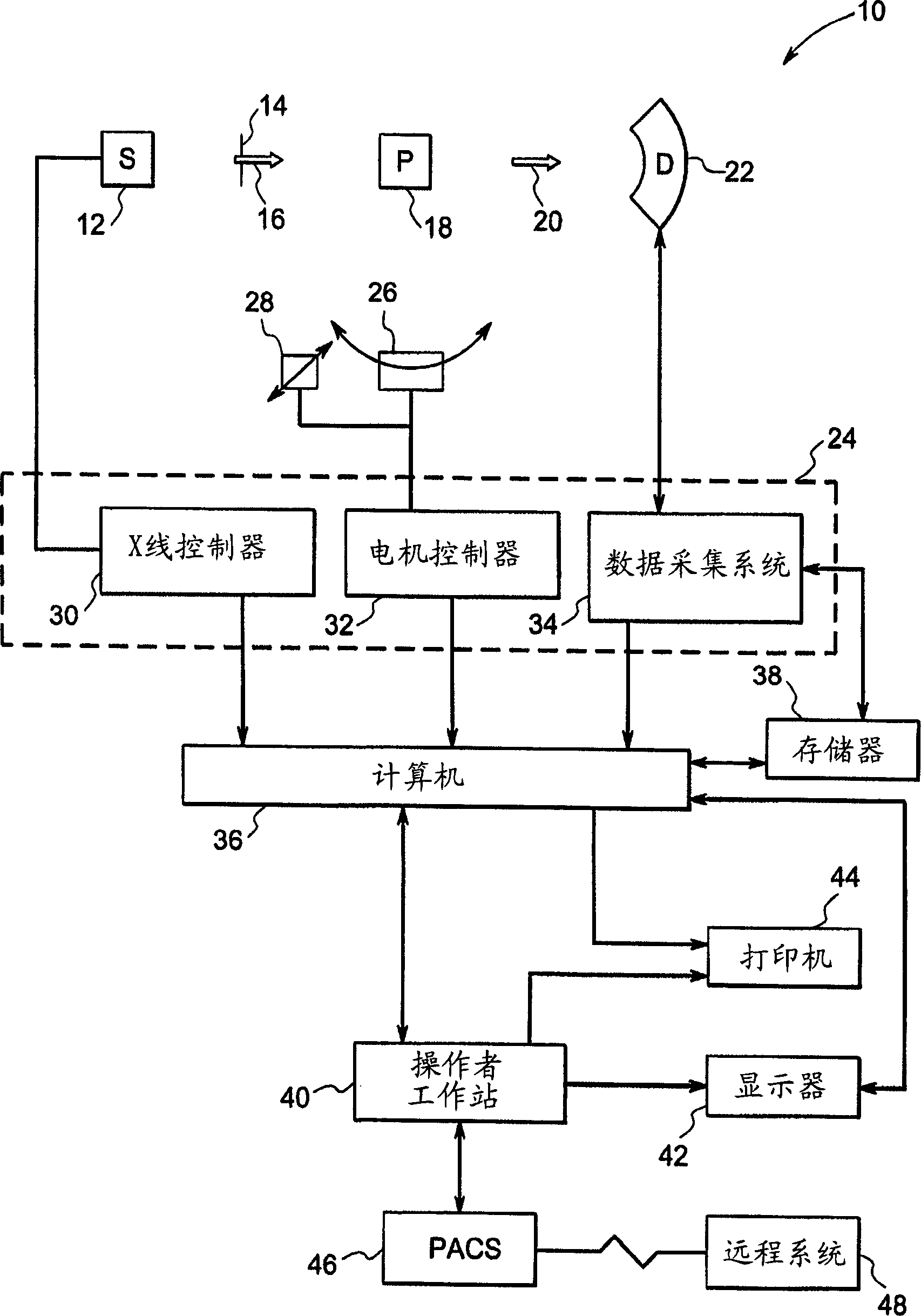Multi-layer direct conversion computed tomography detector module
A tomography and computer technology, applied in the field of multi-layer direct conversion computed tomography detectors, can solve the problems of non-optimized detector dead time and reduced detector energy resolution, etc.
- Summary
- Abstract
- Description
- Claims
- Application Information
AI Technical Summary
Problems solved by technology
Method used
Image
Examples
Embodiment Construction
[0037] Conventional CT imaging systems employ detectors that convert radiographic energy into electrical current signals that are integrated over a period of time, then measured and eventually digitized. A disadvantage of such detectors is however that they cannot provide data or feedback on the number and / or energy of detected photons. In addition, energy discriminating, direct conversion detectors are capable of not only counting x-rays but also providing energy level measurements for each x-ray detected. A disadvantage of these direct conversion semiconductor detectors, however, is that these types of detectors cannot count the X-ray photon flux rates typically encountered with conventional CT systems. In addition, extremely high X-ray photon flux rates are known to induce stacking and polarization, which eventually lead to detector saturation. In other words, these detectors typically saturate at relatively low threshold x-ray flux levels. There is therefore a need to de...
PUM
 Login to View More
Login to View More Abstract
Description
Claims
Application Information
 Login to View More
Login to View More - R&D
- Intellectual Property
- Life Sciences
- Materials
- Tech Scout
- Unparalleled Data Quality
- Higher Quality Content
- 60% Fewer Hallucinations
Browse by: Latest US Patents, China's latest patents, Technical Efficacy Thesaurus, Application Domain, Technology Topic, Popular Technical Reports.
© 2025 PatSnap. All rights reserved.Legal|Privacy policy|Modern Slavery Act Transparency Statement|Sitemap|About US| Contact US: help@patsnap.com



